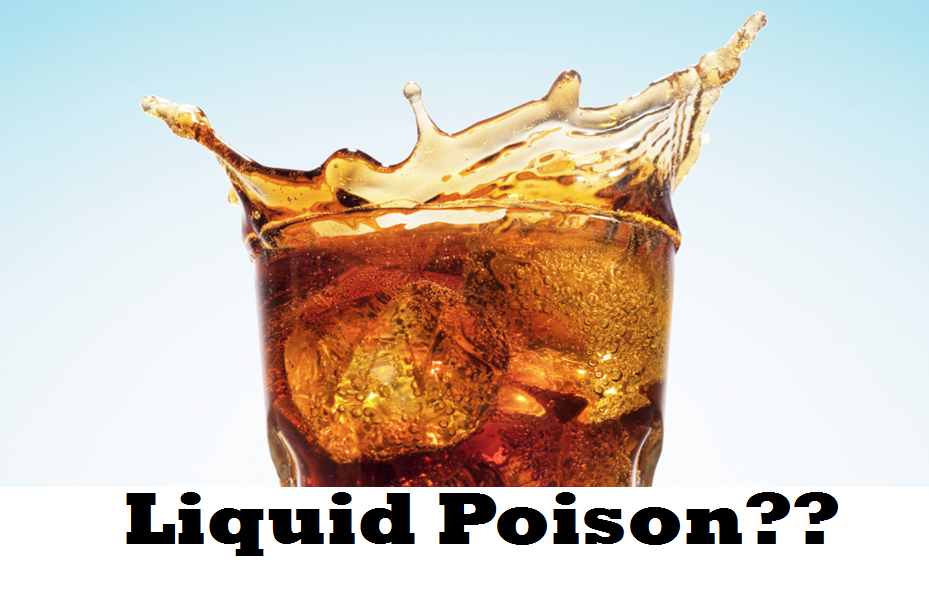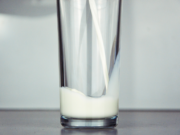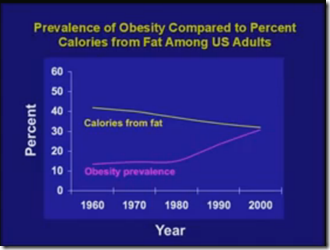
This past week, I stumbled across some information that I just have to share. Its revolutionized my thinking, and actually confirmed many of my thoughts about food.
Is sugar toxic?
I stumbled across a New York Times article about sugar, and how it has such a detrimental effect on the human body that it qualifies as a poison. I was so intrigued that I continued to research. According to one article I read, Dr. William Martin, in 1957, worked on defining when a food is poisonous, and “defined it medically as: any substance applied to the body, ingested, or developed within the body, which causes or may cause disease.” So is sugar a toxin? I continued to read on.
Any health literature you read today will tell you about some of the evils of sugar, and the following points are pretty common knowledge to some these days:
- Sugar provides empty calories and provides little nutritional value (no protein, minerals, vitamins, fiber, antioxidants, ect.)
- Sugar causes tooth decay and is bad for your teeth
The sugar diet
But could sugar actually have more detrimental effect than this. I found an interesting story about some shipwrecked sailors, in 1793, who ate nothing but sugar and rum for nine days. Here’s the excerpt:
This incident occurred when a vessel carrying a cargo of sugar was shipwrecked in 1793. The five surviving sailors were finally rescued after being marooned for nine days. They were in a wasted condition due to starvation, having consumed nothing but sugar and rum. The eminent French physiologist F. Magendie was inspired by that incident to conduct a series of experiments with animals, the results of which he published in 1816. In the experiments, he fed dogs a diet of sugar or olive oil and water. All the dogs wasted and died.
The shipwrecked sailors and the French physiologist’s experimental dogs proved the same point. As a steady diet, sugar is worse than nothing. Plain water can keep you alive for quite some time. Sugar and water can kill you. Humans [and animals] are “unable to subsist on a diet of sugar”. The dead dogs in Professor Magendie’s laboratory alerted the sugar industry to the hazards of free scientific inquiry. From that day to this, the sugar industry has invested millions of dollars in behind-the-scenes, subsidized science. The best scientific names that money could buy have been hired, in the hope that they could one day come up with something at least pseudoscientific in the way of glad tidings about sugar.
The story notes that a diet of sugar and water is unsustainable, and actually far worse for you than simply living off of water. So what is the cause of this, and why was a sugar diet unsustainable.
What is Sugar?
Lately there has been a lot of discussion in the media about Sugar. One man, however, has been at the forefront of the discussion – Dr. Robert H. Lustig, a Professor of Pediatrics at University of California, San Francisco. Dr. Lustig explains his findings in a video lecture you can watch called “Sugar: the bitter truth”. I’ll explain the short version for you though since the lecture is 1 1/2 hours long.
Using the term sugar, most people are referring to Sucrose (refined cane sugar), and High Fructose Corn Syrup, HFCS (corn sugar). Sucrose and HFCS are essentially the same. Both are disaccharides, being made up of glucose and fructose. Glucose is a common sugar found in most carbohydrates like potatoes, and rice, while fructose is the sugar found in fruit. Both of these sugars (glucose and fructose) are different though in the way the body metabolizes them.
How your body metabolizes Glucose and Fructose
 **Sugar is a disaccharide sugar made up of two sugars – glucose and fructose: Source**
**Sugar is a disaccharide sugar made up of two sugars – glucose and fructose: Source**
Glucose – is the energy of life. Your body uses glucose, and drives every cell in the body. When you get too much glucose, your liver can store an unlimited amount. Glucose is also regarded as being non-toxic to the human body.
Fructose – on the other hand is very detrimental to your body. When you consume too much fructose, your liver converts the extra fructose to fat. So basically, the fructose is ingested as a carbohydrate, but is metabolized as a fat. You end up with high levels of triglycerides in your bloodstream leading to things like heart disease, hypertension, and cancer.
Fructose also doesn’t suppress the hunger hormone, ghrelin, so you keep eating. In addition to that, fructose doesn’t stimulate insulin, or leptin to tell your brain you ate something. Basically, your brain keeps telling you that you’re hungry even after you ate hundreds of calories. The fructose also affects the reward mechanism in your brain so you become addicted to a high sugar diet.
When you drink sugary drinks full of fructose, like soda or sports drinks, your basically adding body fat, and messing with your body in some very, very bad ways.
An ongoing debate
Surprisingly, this debate isn’t new. In fact it’s been going on a long time. The New York Times goes through the history pretty well in their article.
According to the New York Times article “During the Korean war, pathologists doing autopsies American soldiers killed in battle noticed that many had significant plaques in their arteries, even those who were still teenagers, while the Koreans killed in battle did not.” The consensus at the time was that Americans ate a high fat diet while the Koreans ate a low fat diet. But, according to the article, “Americans were also eating high-sugar diets, while the Koreans were not.”
Two opinions on the cause of heart disease and obesity
In the 1970s, two men emerged leading the discussion about the growing problem of heart disease, and obesity:
John Yudkin – a leading authority on nutrition in the United Kingdom, did scientific studies on sugars affect on the body. Yudkin experimented, and found that increased sugar intake actually increased blood triglycerides (fat) in the blood. With his research, Yudkin concluded that sugar was a leading cause of heart disease and obesity.
Ancel Keys – a nutritionist at the University of Minnesota, correlated through a series of statistical analyses that heart disease was linked to dietary fat intake. Keys concluded that dietary fat intake must be correlated with heart disease and obesity since the countries with the highest intake of fat also have the most heart disease and obesity.
As you may have guessed, Ancel Keys eventually won the debate, and the USDA began formulating guidelines and standards to reduce fat intake. As a result, sugar intake was not regulated or restricted, and modern nutrition has largely ignored Yudkin’s findings. Only until recently has anyone been challenging today’s thinking about sugar.
Dr. Lustig has been one to challenge today’s thinking. Dr. Lustig noted though that reducing the intake of dietary fat has not helped reduce obesity. In fact, we now have actual data showing that the reverse is actually true.
**Dr. Lustig’s graph showing dietary fat intake declining while obesity prevalence rising: Source**
Dr. Lustig administered a program when he was a practicing pediatrician. For children dealing with obesity, he had them cut sugary drinks, and only drink water or milk. Of course, Dr. Lustig also had them exercise and eat moderately too. But surprisingly the results were best when the kids cut the sugary drinks. So if you’re not feeling well, cut the sugar and see how you feel.
So what does this mean for dairy

**Lactose is a disaccharide sugar made of Galactose and Glucose (no Fructose!): Source**
There is actually very positive information for dairy in all this. Milk doesn’t have any fructose! Lactose, the milk sugar, is made up of glucose and galactose. So milk doesn’t have the same affects as other sugary beverages. Lactose is a natural sugar with a lot of beneficial properties. You can read about lactose in a previous post I did.
This also means that fat probably isn’t as bad as previously thought. Instead of high fat diets causing heart disease and obesity, these diseases are more likely caused by eating too much sugar.
Extreme scrutiny over the amount of fat in some products, like milk, may be unnecessary. I have always found it silly that milk must be labeled with the amount of fat in the milk, when natural milk is roughly 96.5% fat free. Instead, perhaps products with high amounts of sugar should inform people of the side effects of sugar.
Leave your opinion
So is sugar poisonous. There are definitely some hard facts out there supporting this argument. If you use Dr. William Martin’s definition of a poisonous food,(anything ingested that causes disease), Sugar could reasonably be labeled a deadly poison!
I think its EXTREMELLY IMPORTANT to help people understand this. In America today, there is an epidemic of obesity. People need to make informed choices, but how can they make informed choices when they don’t know about a main causes of their disease. We need to spread this information around so people can take action, and live healthy lives again.
I found this to be pretty interesting, but leave your thoughts, and comments below. Please share this article with your friends on your social networks – Facebook, Twitter, and Tumblr. Their health and future well being may depend on it.






















The average person eats 150 pounds of sugar annually as compared to 70 years ago when the average was just 19 pounds. It’s also shocking to see that as the consumption of sugar sky rocked, so did cancer, diabetes and heart problems, not to mention so many, many other debilitating diseases. The reality is, sugar is in almost all processed foods, which what the majority of the population chows down on. Not only that, sugar goes by other names as well like with artificial sweeteners. Sugar is a toxin and when you have a build up of indican in your body, the only result to be expected is a diseased body. Excellent article, thank you.
I am most interested in that you test your milk; we are a dairy farm milking about 250 cows and recently due to a worker not realising that a particular cow’s milk should not have gone into the vat, as she was being treated for mastitis….. A whole tanker load of 35,000 litres of milk had to be dumped and with serious financial consequences for us… Each litre is worth AUD$.53cents to us, plus penalties imposed by the milk factory….
So, how can we test the milk?? Is there a particular machine/test strips??
I’d be very grateful for a reply.
Yes, of course, I would be happy to share more with you. Most dairies I know in the U.S. are testing their milk before it gets sent off. It’s quality assurance, and it can help you avoid a very costly scenario like the one you describe.
On our dairy, we keep the hospital cows separate from the milking herd. Any cow that is treated with antibiotics is milked in a completely different milk barn. Before the cow moves back into the milking herd, her milk is tested for antibiotics.
There are 2 popular options available for you if you want to test for antibiotics in the milk.
The Charm test – This is the test we use on our dairy. You simply take a milk sample, and put some milk in the strip. The strip incubates for about 5 minutes, and gives you a positive or negative reading. You can test for a wide variety of antibiotics if you’d like. Most of the antibiotics we use a Beta-lactams so we primarily test for those. We have used some of the other strips as well though. http://www.charm.com/dairy/dairy-antibiotics.html
Another option is the SNAP test. This is a fairly similar way to the Charm test, only the process is a bit different. Takes about the same amount of time. I know dairies that use this test, and they are happy with it. http://www.idexx.com/view/xhtml/en_us/dairy/snap.jsf
I think it’s great that your looking into testing your milk on the farm. Even though the milk is tested several times along the supply chain, I think it’s good practice that you know that you’re sending a clean, and high quality product when it leaves your farm. I hope this helps answer your question!
it might be worth to mention that if one consumes sugar, it makes no difference how well one would brush teeth it still will be effected from within the body not necessary external contact with teeth